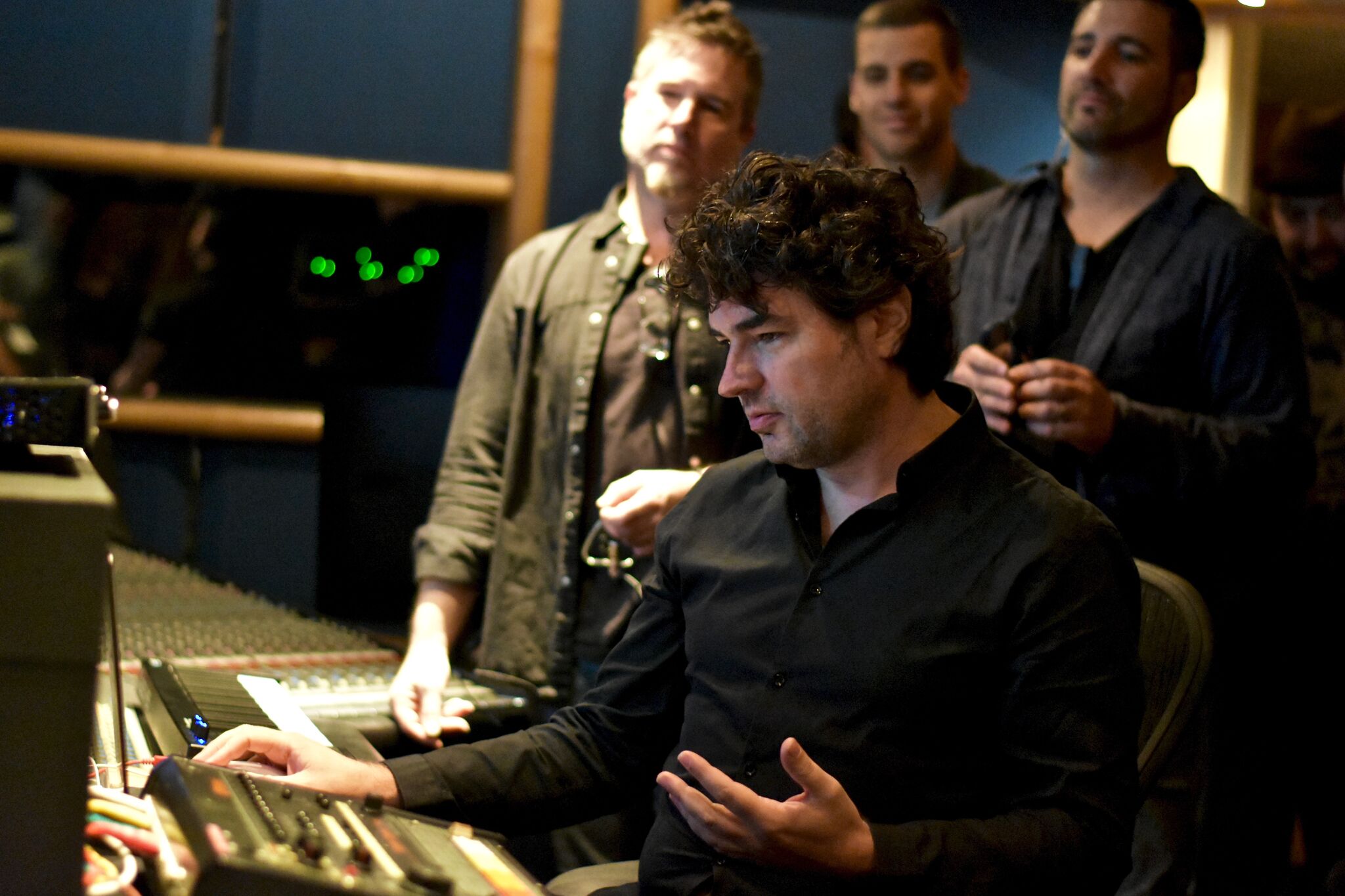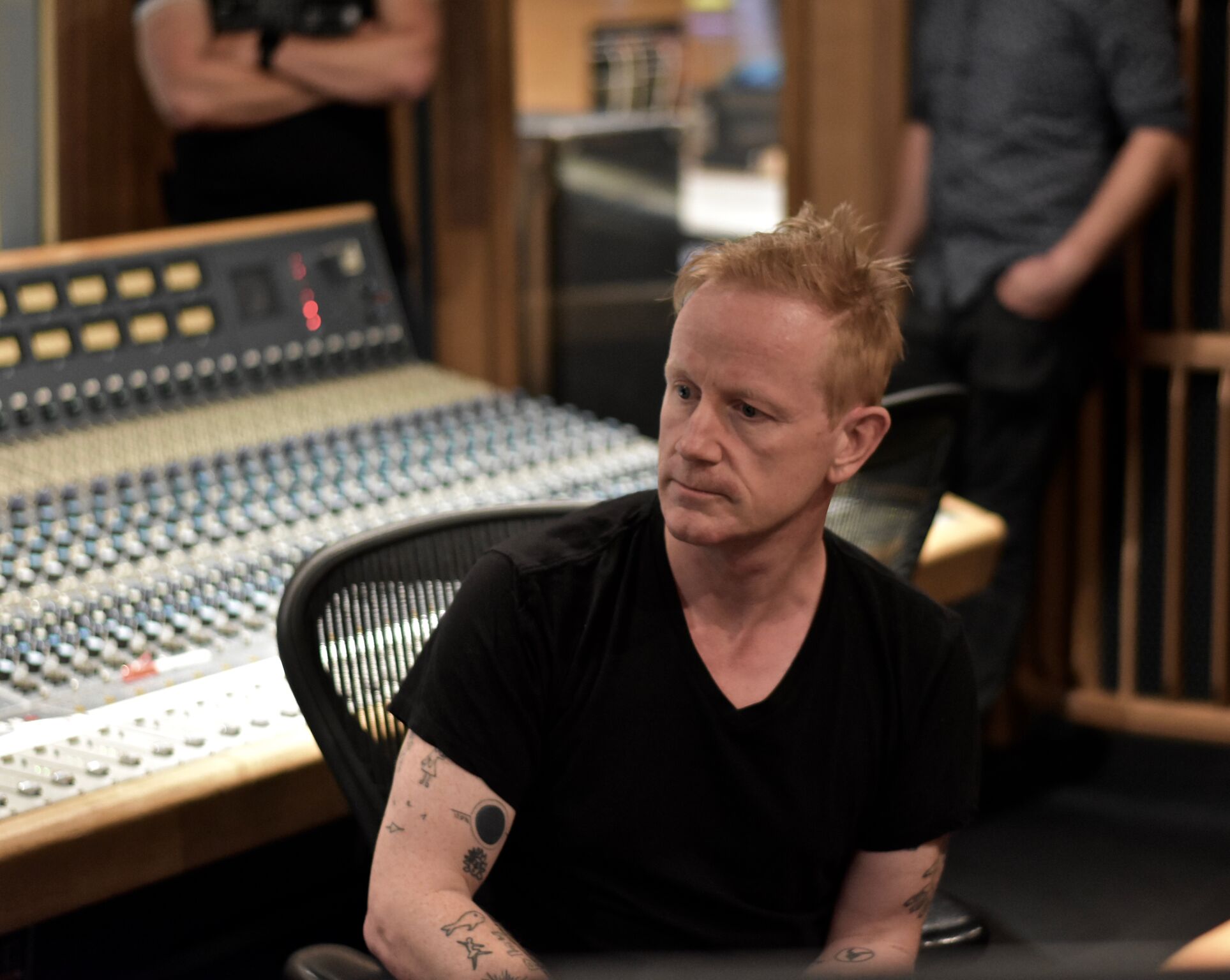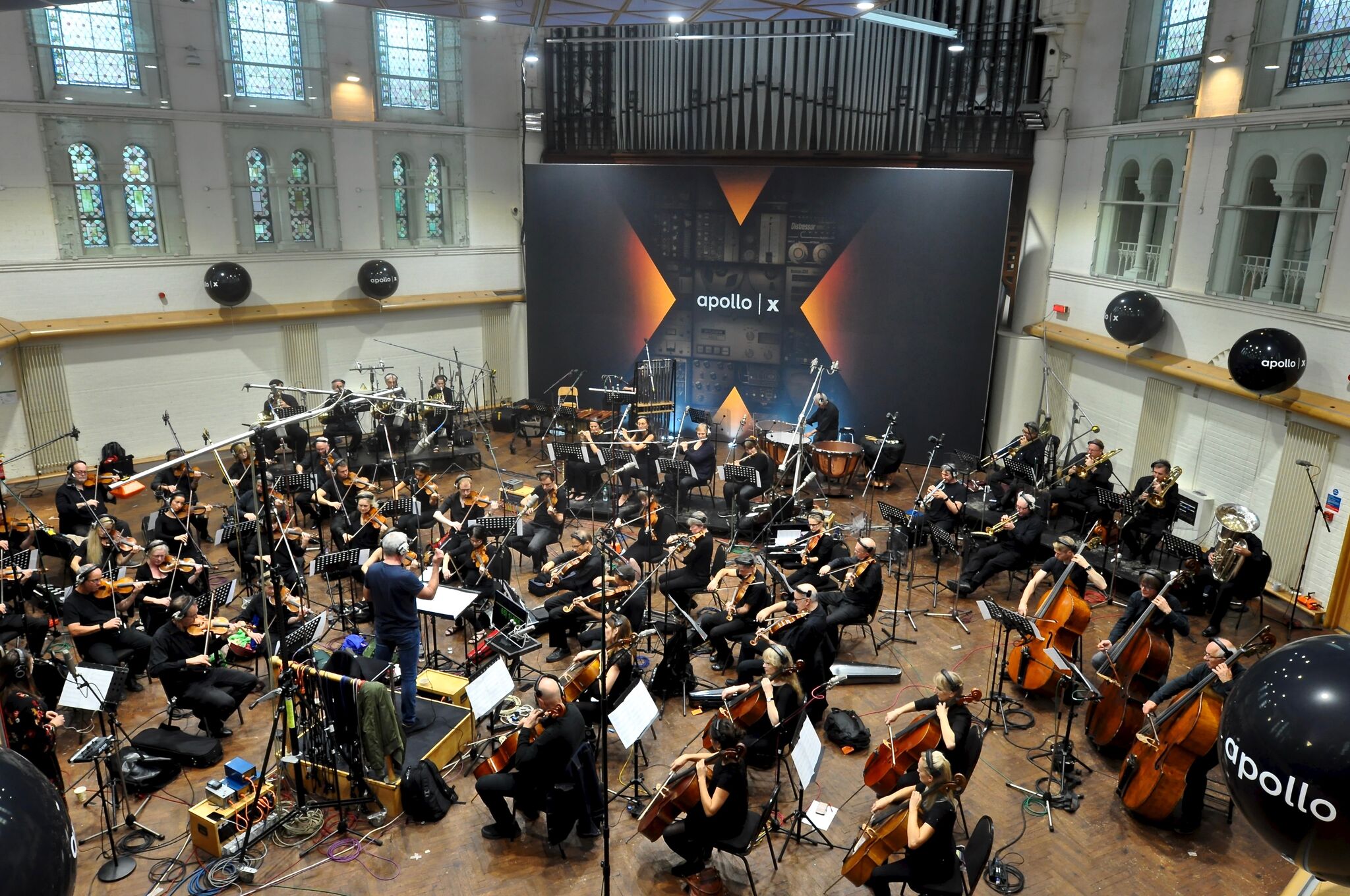Event Recap: UAD Unveils Apollo “X” in Major Session at Legendary AIR Studio
Last week, Universal Audio showcased their recently-launched Apollo X range of audio interfaces at the world-renowned AIR Studios, built by the late Sir George Martin, and we were there in London, UK to observe.
Having chosen an environment where quality and smooth operation are second to none, UA set themselves a three-part challenge: To take a band from pre-production to studio recording to overdubbing of a full orchestra in roughly one hour, using the new Apollo X hardware. Producer Fab Dupont held court in the pre-production studio, while Jacknife Lee [U2, Taylor Swift] was in control of tracking the band Two Door Cinema Club in Studio 1, and finally, the London Metropolitan Orchestra was on hand to overdub their parts in the enormous Lyndhurst Hall.
It was a big production for the unveiling of a new range of audio gear. The new Apollo X range they featured is the third generation of Apollo interfaces. The most central improvement comes in the form of 50% more processors per unit—they now have 6 “HEXA” DSPs in every box.
There is also 10dB more gain on their Unison mic preamps, and an onboard talkback mic. The converters have been redesigned as well, yielding 133dB dynamic range (Apollo x16 only), what UA describes as “the best in the market right now”. And, as a result of a redesigned dual-crystal clock, they have also lowered the jitter significantly further as well. Finally—great for users with analog desks—the interface now boasts +24dBu alignment, giving professional headroom.
In the pre-production studio, Fab Dupont described the Apollo X as a “quantum leap” from previous models. To demonstrate some of the capabilities, he created a beat to accompany a demo vocal, routing signals through UAD software Console and into Ableton, showing off the ease and flexibility of monitoring your sound through the Apollo x6 and Unison-enabled preamps.
Adding preamp or EQ plug-ins did not add any audible latency, or even remotely disturb the groove as it was playing. All of the Apollo X inputs can be live from the moment you turn on your system—you will hear input even before your DAW is loaded.
Not only does this arrangement allow you to process your sound on the way in, but you can simultaneously process within your DAW without audible latency as well. (For the demonstration, Dupont used a sample buffer of 32 at 44.1k sample rate).
Dupont says this two-tier approach is possible because of the efficiency of the new drivers, remarking that it has been particularly helpful with some of the artists he’s been producing of late, who have been recording their parts on tour buses with only Apollo X interfaces.
“There’s no more demos, demos are gone. You record something, this might be your final recording. You have to capture everything with world-class quality right from the beginning,” he says. Having a rig that is quick to activate means that “the gear is not in the way of the creativity,” says Dupont. There is an “immediacy to making music right away without having to think about hardware.”
Moving on to Studio 1, producer Jacknife Lee could be found at an iMac running Logic. A rack of three Apollo x8ps and an Apollo x8 took inputs from the drum kit, guitar and bass amps, electric piano and vocals.
The x8p is a dedicated 8-channel mic pre unit with emulations from Neve, API, Manley, Helios, and more. Every input channel of these 24 Unison preamps had processing applied, with an estimated 40-50 plugins in play in the live tracking session.
The Logic mix bus for control room monitoring also had processing applied in the UA Console (a 33609, Inflator and an Oxford limiter), and the vocal was routed back out of Logic to the UAD Console software out to an EMT plate plug-in to provide the live vocal reverb without any noticeable latency.
In addition, all of the cue mixes were run back out via Logic busses, again with 32 sample buffer and no audible latency. Even with all this going on, they reported we were only at 41% CPU load on the iMac, so there was still plenty of headroom in the system. (I can certainly see why the words “bananas” and “crazy” keep recurring in the studio conversation!)
“This is the new thing for me,” says Jacknife. “I didn’t record with Console before. I would use just Logic, and I didn’t understand why I needed Console, because I was already working. But then I just remembered: I’m walking with a limp. I record with Logic using a spring reverb, knowing that once I’m finished recording, and heading to mixing, I’m going to substitute it for the UA EMT. Today is the first day I’m able to monitor the EMT. Also, then there’s another aspect: Soft synths I can put through virtual tracks, and outboard. Usually I would say, ‘I’ll take this section and then I’m going to do this to it.’ But now I’m just doing it at the same time. It’s kind of mind-blowing, the possibilities. My workflow will change.”
The band recording sounded great, with a solid bottom end on the kick and plenty of detail for a mix created on the hoof. Next, it was time to route the mix through to Lyndhurst Hall for orchestral overdubbing.
Standing on the balcony overlooking the musicians, I witnessed a flawless performance by the London Met Orchestra. The live sonics of the orchestra in the enormous Lyndhurst Hall were beautifully balanced, captured by a huge range of eye-wateringly prestigious Neumann and Schoeps classics, including an M50 Decca tree suspended above the orchestra. Each of these mics were routed through the 96-channel Neve 88R desk in the control room and sub-mixed from 50 raw mic inputs to a more manageable 32 channels using another Apollo system, running Pro Tools this time. The system breezed through this stress test yet again.
Hearing the live acoustic performance was a rare chance to compare the live experience with the reproduced sound in the control room minutes later, and I must say that the flat playback balance was excellent. There was a smooth detail to the top end of the strings, and the dynamics of the orchestra were preserved with visceral impact. When soloing the Decca tree stem, the bottom end fidelity was superb: wide, detailed and un-smeared. UA’s Bill Putnam Jr., sitting in on the playback session, said that he was reminded of the sessions at his father’s United Recording studios that he experienced as a child.
“…The sound of the mics coming up on the buss when there’s an orchestra or big band in there—and then that first note! In a good room! My dad didn’t have rooms this big by any means, but it absolutely takes me back to when I grew up. I got lucky just hearing good sound early. It kinda made an imprint,” he says.
“What I liked about today,” Putnam says, “We talk about gear but there was a lot of music…it just shows when you have good music, good talent, good rooms, stuff can sound really inspiring. It was very emotive.”
Please note: When you buy products through links on this page, we may earn an affiliate commission.









